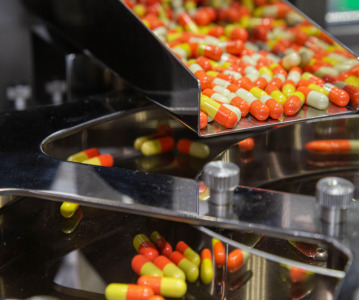CPHI 2015 Annual Report: Part i

CPHI expert warns without urgent regulatory change improving quality is a fool’s game.
CPHI Worldwide, organised by UBM EMEA, has launched Part i of its annual report wherein CPHI expert, Girish Malhotra calls for a radical solution to improve pharma manufacturing processes in his thought provoking piece.
He argues that for far too long we have allowed the status quo to continue, and that for true continual improvement we need to make it easier for companies to make vital alterations to manufacturing processes, without being hindered by a full re-approval process.
Under his guidelines the pharmaceutical industry will be allowed to commercialise process improvements (yield, process/operating conditions, operating parameters, cycle time) in the manufacture of approved APIs and their formulations. Guarantees on quality will then be provided from the manufacturing company, and they must ensure that the product efficacy and performance will not lessen, and the product will be equal to or better than the approved product produced by the company.
Crucially, if for any reason these standards are not met, he suggested a stipulation that the company proposing improvements will be barred from making the product using the alternate process for the next 2 or 3 years. And, if they do decide to use the alternate process, they will have to go through the full re-approval process.
In addition, Girish states that minor changes that do not change the current filed processing methods will be excluded, and this will apply to OTC, brand and generic products.
The FDA established 21CFR314.7 and it assures that there is no “by manufacturer’s choice” deviation from the manufacturing methods and practices that have been filed for the components involved in the manufacture of any saleable drug — the API and their formulation — and labelling, packaging etc. However, as every change has to be reported, drastic process changes, even when there are clear benefits for the finished drug and patient, are summarily discouraged.
Girish, commented: “21 CFR314.70 encourages ‘continuous improvements’ in the processes that will create the best product for clinical trials and that’s the way it should be. However, in my estimation under the current rules all of this has to be done prior to going to clinical trials. QbD (quality by design) becomes a natural part of the process development before a process is commercialised. But after the fact process change is extremely difficult.”
Girish believes that the benefits of a new regulatory regime far outweigh the risks, as cost reduction, improved profits and a larger customer base due to improved manufacturing technologies and efficiencies, will be a huge step forward.
Despite a commitment to continuous improvement anything “after the fact”, under the current regulatory environment, simply will not happen due to the financial and time constraints of re-approval. Thus, although the current regulations and QbD are well intentioned, they do not yet breed a culture of continuous improvement.
He added: “I admit that my proposal is a quite audacious, but unless such bold steps are considered, very little will change in the current pharma’s manufacturing methodologies or anywhere, for that matter. If incorporated in pharmaceutical manufacturing landscape, continuous improvements and innovation could become a routine and it could be extended to the whole healthcare industry. It has an opportunity to add as much as 20% of the global population (~1.4 billion) to its customer base, an unprecedented opportunity for any industry on the planet. Profits will improve and healthcare costs can come done. It would be a win-win.”
Related News
-
News Pharmapack Awards 2024 Patient-Centric Design Award Winner – Dr Ferrer BioPharma
The 2024 Pharmapack Awards celebrated the best in innovation and design for the pharmaceutical packaging and drug delivery industry on January 24, 2024. -
News Women in Pharma: Minding the Gap at Pharmapack 2024
2024 marks the first year Pharmapack will host a Diversity track dedicated to bridging the gap within the pharmaceutical packaging and drug delivery sector. The track includes a panel discussion on 'Enabling Diversity in the Workplace,' focused... -
News Pharmapack Awards 2024 - Celebrating Packaging and Drug Delivery Innovation
The 2024 Pharmapack Innovation Awards ceremony celebrated the best in pharmaceutical packaging and drug delivery innovation at all levels. The awards were held on January 24, 2024 at the Paris Expo Porte de Versailles. -
News Pharmapack 2024 - From the Floor
Paris once again welcomes Europe’s leading trade show in pharmaceutical packaging and drug delivery innovation. Join our content team as Pharmapack 2024 opens its doors to leading experts and innovators in pharmaceutical packaging and drug delive... -
News CPHI Barcelona 2023: Partnering for Success – Managing Outsourcing Relationships to Optimise Manufacturing Operations
During CPHI Barcelona 2023, insightful content sessions offered attendees the chance to explore trending topics with expert speakers and panellists. Here, we summarise what the pharma industry and supply chain are talking about the most. -
News CPHI Barcelona 2023: Loading Potential – Artificial Intelligence for Pharma Manufacturing
During CPHI Barcelona 2023, insightful content sessions offered attendees the chance to explore trending topics with expert speakers and panellists. Here, we summarise what the pharma industry and supply chain are talking about the most. -
News Pharmaceutical industry supports COP28 health stance in joint statement
As COP28 takes place over this week in Dubai, UAE, several bodies in the pharmaceutical and health industries have come together to announce support of key movements in sustainability in the sector, and to recognise sustainability as a health issue.&nb... -
News CPHI Podcast Series: Start-ups take centre stage at CPHI Barcelona
The first episode of the CPHI Podcast Series since we attended CPHI Barcelona in October covers the Start-up market at the event, with expert Matthew Wise joining Editor Lucy Chard to discuss the event.
Position your company at the heart of the global Pharma industry with a CPHI Online membership
-
Your products and solutions visible to thousands of visitors within the largest Pharma marketplace
-
Generate high-quality, engaged leads for your business, all year round
-
Promote your business as the industry’s thought-leader by hosting your reports, brochures and videos within your profile
-
Your company’s profile boosted at all participating CPHI events
-
An easy-to-use platform with a detailed dashboard showing your leads and performance





.png)

